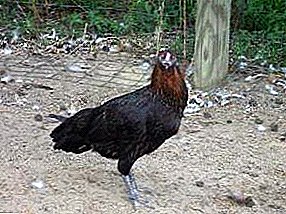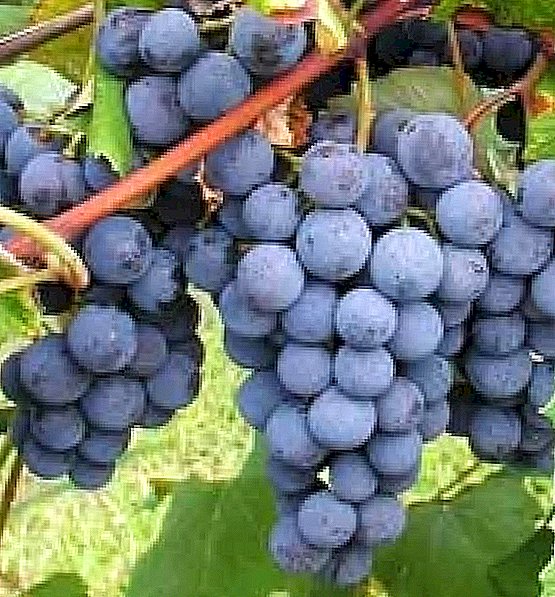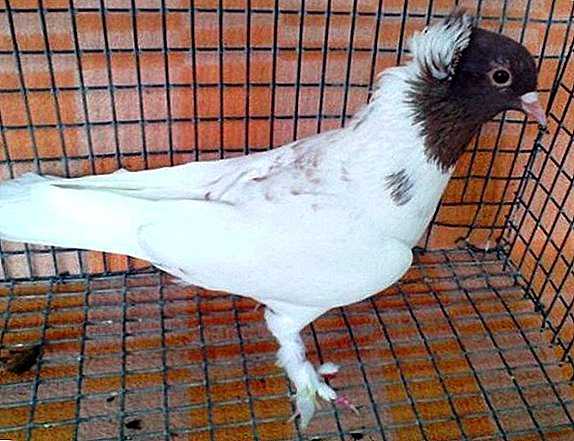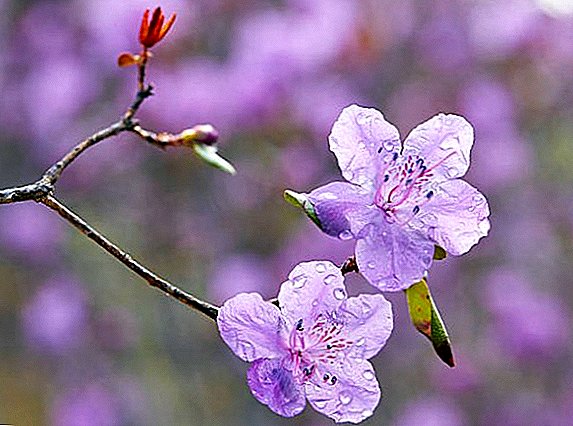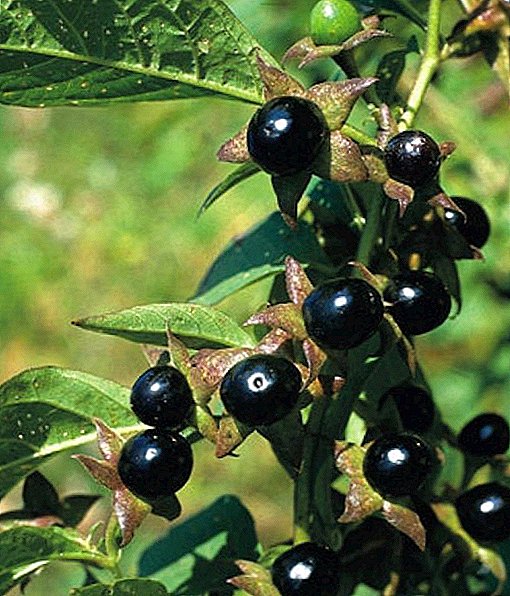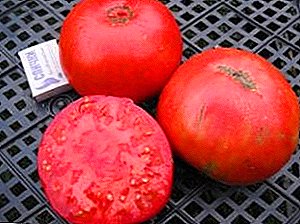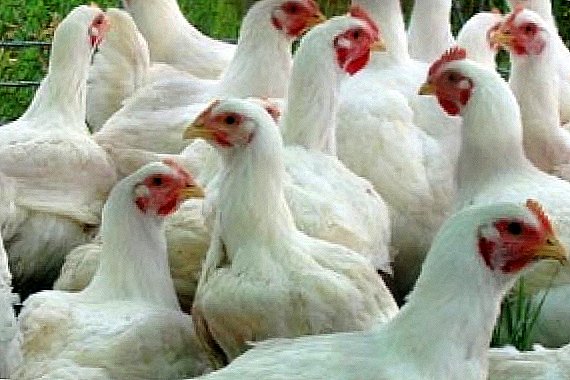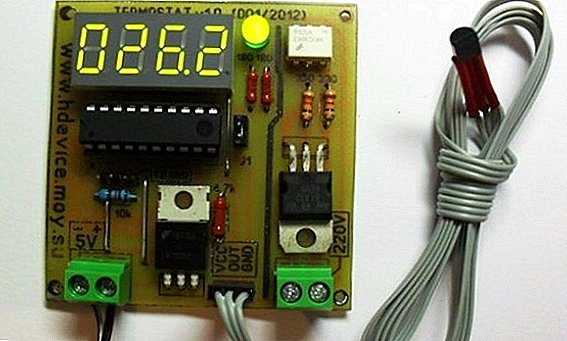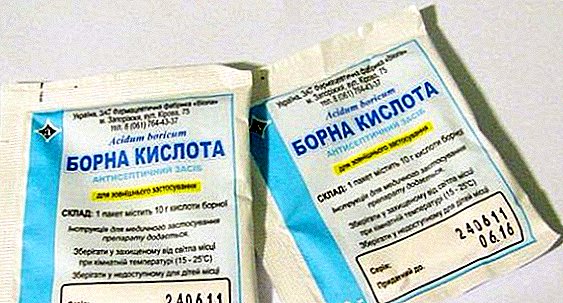 Boric acid is indispensable for all fruit, vegetable, berry and ornamental crops. It not only protects them from pathogenic microbes, but also increases yields, contributes to an increase in sugar content. The result is delicious, high-quality fruit. Moreover, the treated plants are not subjected to rot, their fruits do not crack from excessive moisture. Boron is not an alternative to any fertilizer, but a vital element for flora. How does boric acid affect plants in the garden and in the garden and in what proportions to use it - we learned about this from experienced farmers.
Boric acid is indispensable for all fruit, vegetable, berry and ornamental crops. It not only protects them from pathogenic microbes, but also increases yields, contributes to an increase in sugar content. The result is delicious, high-quality fruit. Moreover, the treated plants are not subjected to rot, their fruits do not crack from excessive moisture. Boron is not an alternative to any fertilizer, but a vital element for flora. How does boric acid affect plants in the garden and in the garden and in what proportions to use it - we learned about this from experienced farmers.
Did you know? More than 300 years ago, the French naturalist and physician Wilhelm Gomberg obtained free boric acid by heating a mixture of borax and sulfuric acid. Over time, it was introduced into medicine called "salsedavitum".
Boric acid: description
In the natural environment, unbound boric acid is found in some volcanic areas of Tuscany, the Loparian Islands and Nevada. It can also be found in many minerals, such as borax, boracite, colemanite. Moreover, this element was discovered even in sea water and in all plants.
Boric (orthoboric, orthoborate, borate) acid is a weak inorganic acid. These are white crystals, which are poorly soluble in cold water. When heated, they lose moisture, forming first metaboric, then tetraboric acid and, finally, boric oxide. If the compounds listed above are immersed in water, boric acid is again formed from them.  Boric acid solution is widely used in medicine as an antiseptic, in horticulture, horticulture, and even in nuclear reactors.
Boric acid solution is widely used in medicine as an antiseptic, in horticulture, horticulture, and even in nuclear reactors.
What is useful boric acid for plants
For fruit and ornamental, flowering crops, boric acid is the most important fertilizer throughout the growing season. When processing the stems, the component helps supply the roots with oxygen, increases the penetration of calcium into all plant fibers, increases the amount of chlorophyll in the green biomass, and improves metabolic processes.
When spraying seeds with acid, their germination is stimulated. In the early stages of processing plants, rooting of seedlings is improved, the percentage of the formed ovary is increased, the synthesis of nitrogenous substances is normalized. Timely feeding with boric acid provokes rapid growth and strengthening of the culture. Agrochemists say: if the soil is sufficiently saturated with boron, the fruit bearing, the yield of the crop and the resistance of the plant to adverse conditions, including pests, infections, increase.
Did you know? Boric acid is effective in controlling various insects, including cockroaches and ants.
The use of boric acid in the garden and garden: instructions for use
 Boric acid in horticulture is used to accelerate the growth and development of vegetable crops and good germination of grains. To do this, it is recommended to place the seeds before planting in a gauze bag and soak it in a solution of boric acid at the rate of 0.2 g per 1 liter of hot water for two days. You can prepare a mixture of ash from 5 g of baking soda, 1 g of potassium permanganate, 0.2 g of boric acid and 1 l of warm water.
Boric acid in horticulture is used to accelerate the growth and development of vegetable crops and good germination of grains. To do this, it is recommended to place the seeds before planting in a gauze bag and soak it in a solution of boric acid at the rate of 0.2 g per 1 liter of hot water for two days. You can prepare a mixture of ash from 5 g of baking soda, 1 g of potassium permanganate, 0.2 g of boric acid and 1 l of warm water.
Twice during the budding period, gardeners spray cultures with boron-containing preparations. Boric acid as a fertilizer can be used three times for the garden. The latter treatment is carried out in order to increase the sugars in the fruit, which will improve their taste. The solution is prepared in a ratio of 10 g of element per 10 l of water. Depending on the culture concentration may vary. The procedure is recommended to carry out in the evening to avoid burns on the leaves.
Boric acid root-dressings are extremely rare, since the solution can severely damage the fibers. Basically, when watering, the crystals are added in order for the fruits to acquire bright, rich tones. Do this procedure no more than 1 time in 3 years. Experienced farmers advise to moisturize the soil thoroughly before making such microfertilizers.
How to apply acid to apples and pears
 Boron is not peculiar from passing away foliage to young shoots. Therefore, in the period of active growth of fruit crops foliar feeding is very important. On apples and pears, the lack of this substance is manifested by the development of fruit stumping. In severely neglected cases, the top of the trees begins to fade rapidly. The leaves are twisted, unnaturally bend, thickened petioles. The veins on their surface become thicker and clearer. At the ends of the sprouts, young leaves form a kind of rosette, which is unusual for the normal development of apple and pear trees. If nothing is done at the initial stages, the disease will progress: the inflorescences will wither, and the resulting ovary will bear deformed fruits. The flesh of infected apples and pears is covered with large, whitish patches that turn brown over time.
Boron is not peculiar from passing away foliage to young shoots. Therefore, in the period of active growth of fruit crops foliar feeding is very important. On apples and pears, the lack of this substance is manifested by the development of fruit stumping. In severely neglected cases, the top of the trees begins to fade rapidly. The leaves are twisted, unnaturally bend, thickened petioles. The veins on their surface become thicker and clearer. At the ends of the sprouts, young leaves form a kind of rosette, which is unusual for the normal development of apple and pear trees. If nothing is done at the initial stages, the disease will progress: the inflorescences will wither, and the resulting ovary will bear deformed fruits. The flesh of infected apples and pears is covered with large, whitish patches that turn brown over time.
Important! Boric acid is soluble only in hot water. To obtain a working solution, first the crystals are poured with a small amount of heated liquid, and then diluted with cold to obtain the required volume.Boric acid is recommended for diseased and perfectly healthy plants in 2-3 times application. Spraying crowns is recommended for prophylactic purposes at the beginning of flowering, followed by a repetition in a week. The treatment solution is prepared at the rate of 20 g of powder per 10 liters of water. If such foliar feeding is applied to damaged fruit trees, the fall of the ovary will noticeably decrease. But it is better not to allow the massive deterioration of the fruit and carry out processing to its advance.
The use of boric acid for strawberries
 For receiving sweet fleshy berries of garden strawberry and wild strawberry it is recommended to carry out systematic processing of plants. Otherwise, boron deficiency will affect necrosis and foliage deformation. Spraying is necessary before opening the buds, as well as during the fruiting period, when the berries reach normal sizes. Some farmers advise in the early spring to pour boric acid in accordance with the instructions for use plot in the country. You can add a few drops of potassium permanganate to the solution. 10 liters of liquid will be enough for approximately 40-50 plants. Later, when peduncles form, it is advisable to spray the bushes with a mixture of 5 g of boron powder and 10 liters of water. And during the ripening of the berries, it is recommended to add an additional fertilizer from boric acid, manganese ash and 1 cup of water in a ratio of 2: 2: 1.
For receiving sweet fleshy berries of garden strawberry and wild strawberry it is recommended to carry out systematic processing of plants. Otherwise, boron deficiency will affect necrosis and foliage deformation. Spraying is necessary before opening the buds, as well as during the fruiting period, when the berries reach normal sizes. Some farmers advise in the early spring to pour boric acid in accordance with the instructions for use plot in the country. You can add a few drops of potassium permanganate to the solution. 10 liters of liquid will be enough for approximately 40-50 plants. Later, when peduncles form, it is advisable to spray the bushes with a mixture of 5 g of boron powder and 10 liters of water. And during the ripening of the berries, it is recommended to add an additional fertilizer from boric acid, manganese ash and 1 cup of water in a ratio of 2: 2: 1.
Boric acid for tomatoes
In tomatoes, the average need for boron. Its shortage is manifested by darkening and withering away of the stems, the fragility of young shoots and dark spot on the fruit. To prevent the fibers on the tomatoes from dying off, it is necessary to treat the seeds with dissolved crystals before planting. Boric acid for tomatoes is desirable in the period of transplanting. You can fertilize the soil with acid or boron-containing drugs. In order not to burn the root system, carefully pour the prepared wells with plain water. Such a procedure is of particular importance on lands that are plowed for the first time.
Boric acid spraying of tomatoes is important when the flower stalks have already formed, and the buds have not yet opened. The solution is prepared according to the standard scheme: 10 g per 10 l.
Important! Apple trees, pears, Brussels and cauliflower, swede and beets have the highest boron needs. Beans, potatoes, peas and strawberries are less dependent on this element. But in any case, its deficiency greatly affects the condition of the plants.
How to apply boric acid to grapes
 If the grapes lack boron, even elite varieties will bring small brushes. A signal of its lack will be chloride spots on the leaves. Experts call such processes "pea". Treatment and prophylaxis is recommended with boric acid, for which one treatment is enough in the initial stages of the disease.
If the grapes lack boron, even elite varieties will bring small brushes. A signal of its lack will be chloride spots on the leaves. Experts call such processes "pea". Treatment and prophylaxis is recommended with boric acid, for which one treatment is enough in the initial stages of the disease.
Spraying is best organized during the formation of inflorescences. In this case, they will not crumble, which will increase the yield. When preparing the solution (5 g of powder per 10 liters of water), experienced gardeners add 5 g of zinc. Repeat processing is desirable, as in other fruit crops, during fruit ripening.
Boric acid for cucumbers
Feed boric acid for cucumbers as well as for tomatoes, is important because it contributes to abundant flowering and the formation of the ovary. A more effective way was foliar application of micronutrients before opening the buds. In a solution of 5 g of acid and 10 liters of water, some gardeners are advised to add a little sugar or honey. This is done to attract insect pollinators. Repeated spraying of cucumbers with boric acid is done when an ovary is formed. Instead of sugar, a couple of drops of potassium permanganate are added to the traditional solution to prevent powdery mildew on the sprouts.
The use of boric acid for beets
 Although beetroot is considered less dependent on boron content, but its shortage immediately renders the whole root crop unusable. In connection with the development of fomoz caused by fungi, the beet core begins to rot, the leaves are covered with pale brown dots. Such beets can not be consumed, it has an unpleasant smell, taste, toxic substances are formed in the blackened fibers.
Although beetroot is considered less dependent on boron content, but its shortage immediately renders the whole root crop unusable. In connection with the development of fomoz caused by fungi, the beet core begins to rot, the leaves are covered with pale brown dots. Such beets can not be consumed, it has an unpleasant smell, taste, toxic substances are formed in the blackened fibers.
To save the crop and prevent the appearance of fungi, the first step is to process the seed before planting. And when the seedlings give 4-5 leaves, it is enough to carry out one spraying with a standard solution.
Important! For humans, boric acid during external contact is completely harmless: it does not cause allergic reactions and irritation on the skin. When ingested, boron is slowly excreted from the body. 20 g of the substance is a lethal dose. In large quantities boron is more likely to harm plants than it will help in development. Arched leaves, their yellowness testify to the excess. If such cultures feed cattle, soon he will have chronic diseases of the gastrointestinal tract.
Boric acid and potatoes
 With a deficit of boron potatoes strike scab. The sprouts develop slowly, the foliage turns yellow, the stems become brittle. Agrochemists suggest a pattern: the dependence of tubers on boron determines the composition of the substrate. The need increases in sod-podzolic, forest, marshy, acidic lands. And also in areas with an increased composition of carbonates, potassium, nitrogen, lime. Phosphorus fertilizers, on the contrary, reduce the need for boron-containing fertilizers.
With a deficit of boron potatoes strike scab. The sprouts develop slowly, the foliage turns yellow, the stems become brittle. Agrochemists suggest a pattern: the dependence of tubers on boron determines the composition of the substrate. The need increases in sod-podzolic, forest, marshy, acidic lands. And also in areas with an increased composition of carbonates, potassium, nitrogen, lime. Phosphorus fertilizers, on the contrary, reduce the need for boron-containing fertilizers.
At the first manifestations of scab, it is important to treat the bed with a solution of boric acid at the rate of 6 g per 10 l of water. The prepared mixture is enough for 10 square meters. m. With the preventive purpose spraying of planting material or the first shoots of potatoes will help.
Signs of lack of boron in garden and garden plants
Boric acid for use in the garden can not be replaced. The lack of this element is expressed by many unpleasant signs:
- the foliage at the top of the plant turns pale and yellow;
- new leaves grow deformed, brittle, quickly fade;
- only lateral buds develop, apical altogether absent;
- necrosis is noticeable on the stems and fruits;
- the top of the shoots dies off;
- inflorescences are poorly tied;
- ovary badly showered;
- root crops cover fungal scab;
- cauliflower is affected by brown rot.
Boric Acid Preparations
 In specialized stores you can find a wide range of different fertilizers, including boron. For spraying boric acid on tomatoes, cucumbers, potatoes and other vegetable crops, Mag-Bor recommended itself flawlessly (a package of 20 g is diluted in 10 liters of water, the solution is consumed in 3 sq. M.).
In specialized stores you can find a wide range of different fertilizers, including boron. For spraying boric acid on tomatoes, cucumbers, potatoes and other vegetable crops, Mag-Bor recommended itself flawlessly (a package of 20 g is diluted in 10 liters of water, the solution is consumed in 3 sq. M.).
For the treatment of decorative flower indoor plants effective "Pokon" (boron liquid in a green bottle). It is possible to prepare the working solution from a packaged in 10-gram bags of concentrated boric acid or bormonium fertilizer, which contains 13% boric acid and 14% magnesium oxide. Agricultural chemists recommend using boric superphosphate and borax (sodium boric acid) as the main feed.
Now that you know about the benefits of boric acid, when we figured out what it is needed for in the garden and in the garden, we hope your plants will enjoy abundant crops.


